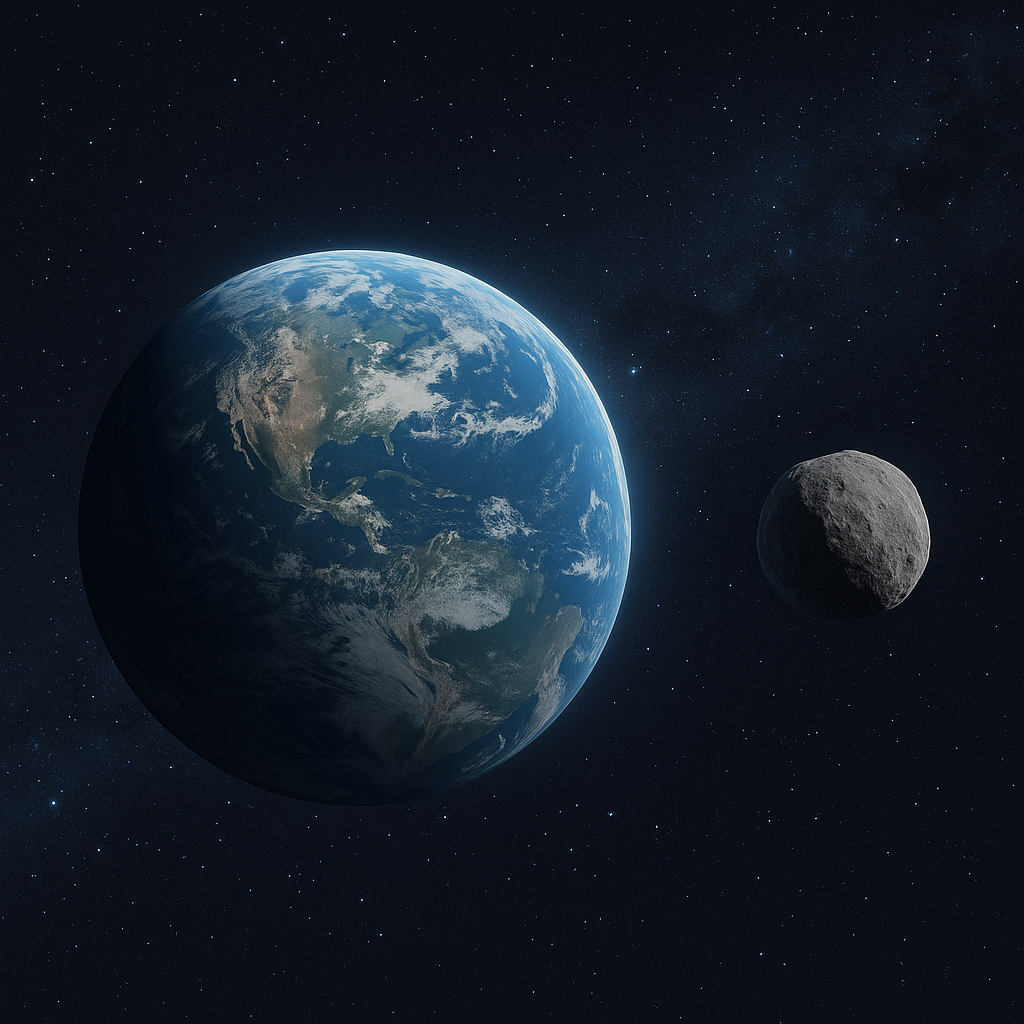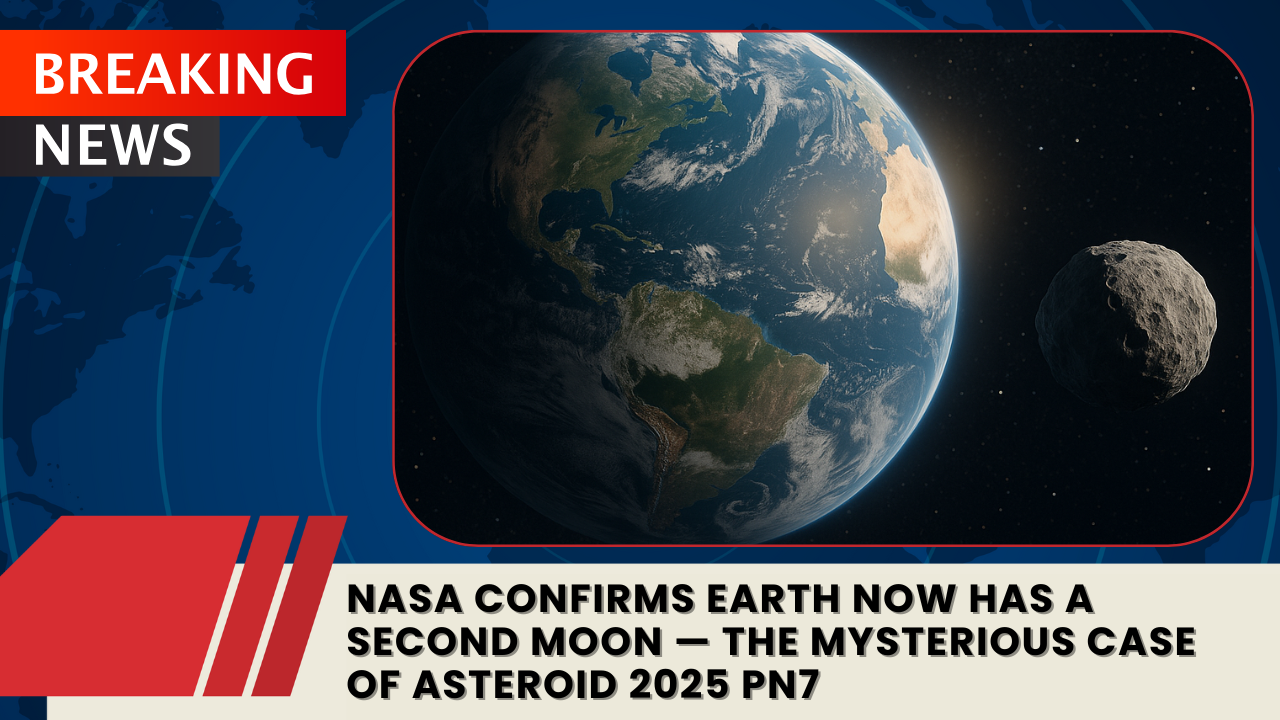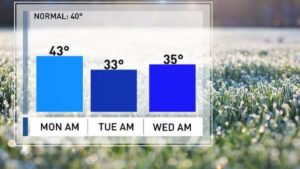In a groundbreaking confirmation, NASA has verified the existence of a new quasi-moon orbiting alongside Earth — a small asteroid known as 2025 PN7. First discovered by astronomers at the University of Hawaii, this intriguing space rock travels almost perfectly in sync with our planet as both orbit the Sun.
Estimated to be between 18 and 36 meters wide, roughly the size of a small building, 2025 PN7 has been following Earth’s orbital path for around 60 years, according to NASA’s latest calculations. The agency reports that this celestial companion will continue shadowing our planet until approximately 2083, when gravitational forces are expected to slowly push it away into deeper space.
What Is a Quasi-Moon?
Unlike our Moon, which is gravitationally bound to Earth, a quasi-moon is not a true satellite. Instead, it orbits the Sun—but in a path closely aligned with Earth’s. This unique relationship creates the illusion that the object is orbiting our planet when viewed from Earth.
Think of it like two runners on the same track, moving at nearly identical speeds. Earth and 2025 PN7 follow similar trajectories around the Sun, staying relatively close but never actually tethered to each other.
NASA scientists emphasize that quasi-moons are rare. Only eight such bodies have been confirmed across the solar system, making this discovery both unusual and scientifically valuable.

Discovery and Confirmation
The story of 2025 PN7’s discovery began during a routine sky survey by astronomers at the University of Hawaii in early 2025. Using advanced telescopes, researchers noticed a faint, slow-moving point of light that stood out due to its peculiar orbital pattern.
Upon closer observation, scientists found that the asteroid’s orbital period — the time it takes to circle the Sun — matched Earth’s almost exactly. This behavior was the key indicator that 2025 PN7 was not an ordinary asteroid but a quasi-satellite.
After weeks of tracking and analysis, NASA officially confirmed the asteroid’s status as a quasi-moon later in the year, adding a new member to Earth’s small family of co-orbiting companions.
The Orbit of 2025 PN7
NASA’s tracking data reveals that 2025 PN7 moves between 4 million and 17 million kilometers from Earth — about ten times farther away than our natural Moon. Despite its significant distance, the asteroid’s synchronized orbit makes it appear to hover near Earth over long periods.
Scientists believe the asteroid has been in this stable orbit since the early 1960s, its movement influenced by the gravitational balance between the Sun, Earth, Venus, and Jupiter. However, like most quasi-moons, its stability is temporary. By 2083, subtle gravitational tugs are expected to alter its trajectory, causing it to drift out of resonance and leave Earth’s neighborhood.
Why NASA’s Discovery Matters
The discovery of 2025 PN7 provides valuable insights into Earth’s gravitational environment and the behavior of near-Earth objects (NEOs). Studying quasi-moons allows astronomers to better understand how celestial bodies interact and how asteroids become temporarily trapped in Earth’s orbital zone.
In addition, these cosmic companions could serve as future research destinations for space missions. Their proximity and stable paths make them ideal for testing spacecraft navigation, sampling asteroid materials, and studying early solar system formation — all at a relatively low mission cost compared to more distant targets.
NASA researchers also note that identifying quasi-moons like 2025 PN7 enhances planetary defense efforts, helping scientists improve models that track potential Earth-crossing objects.
A Quiet Partner in Earth’s Orbit
Although 2025 PN7 will never outshine the brilliance of the Moon, its presence highlights the dynamic and ever-changing nature of our cosmic environment. It silently travels beside Earth, orbiting the Sun in a delicate gravitational dance that has continued unseen for decades.
Until its predicted departure around 2083, this tiny asteroid will remain a symbol of the subtle complexities of our solar system — a reminder that even small celestial companions can reveal vast cosmic truths.
Quick Facts About Earth’s New Quasi-Moon, 2025 PN7
| Feature | Details |
|---|---|
| Name | 2025 PN7 |
| Type | Quasi-moon (asteroid) |
| Size | 18–36 meters wide |
| Discovered by | University of Hawaii, 2025 |
| Confirmed by | NASA |
| Orbit Range from Earth | 4 million–17 million km |
| Following Earth Since | Early 1960s |
| Expected to Leave Orbit | Around 2083 |
The Bigger Picture
NASA’s confirmation of 2025 PN7 adds to a growing understanding of near-Earth celestial dynamics. As researchers continue to study the object’s movement, they hope to uncover clues about gravitational interactions, orbital resonance, and how small bodies share space with larger planets.
This discovery reinforces one fascinating fact: Earth doesn’t just have one moon — at times, it has several temporary companions quietly orbiting nearby.



